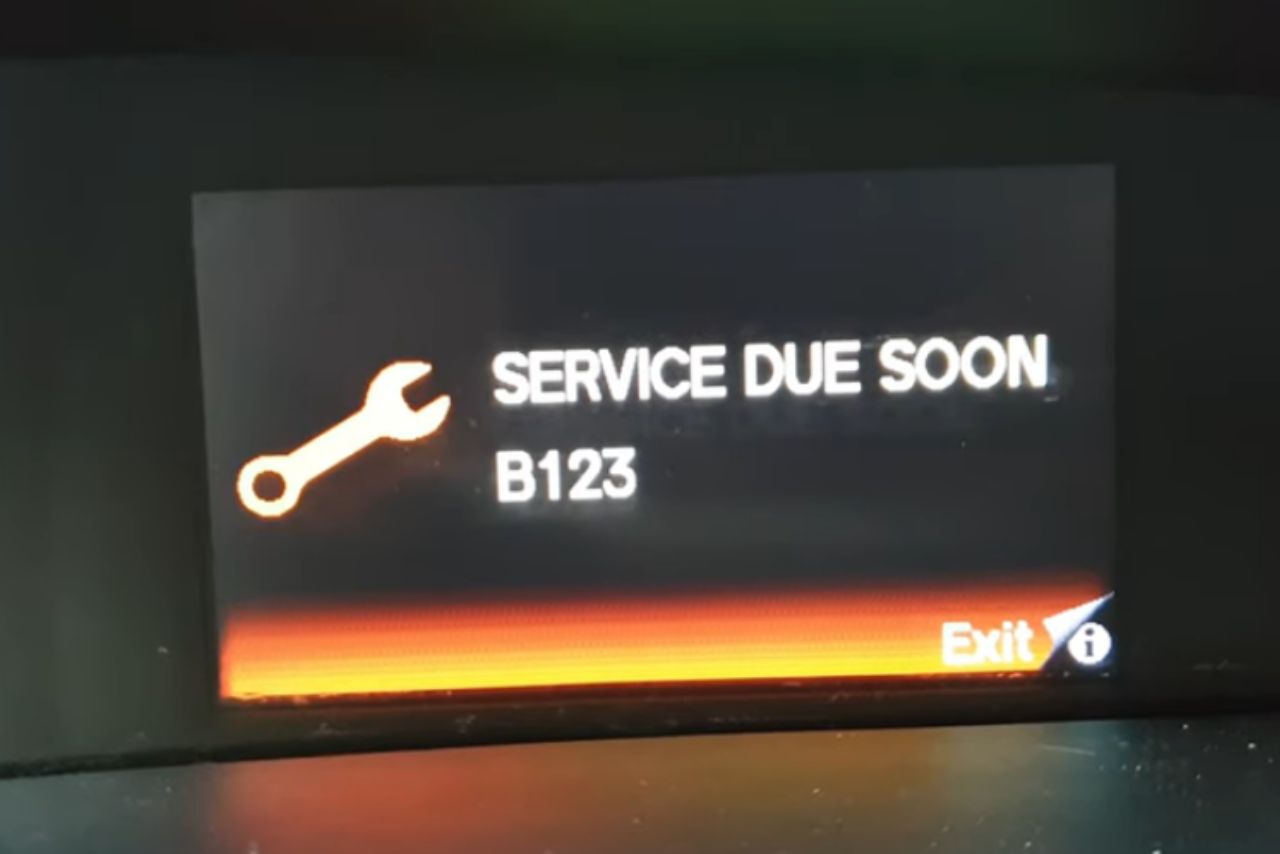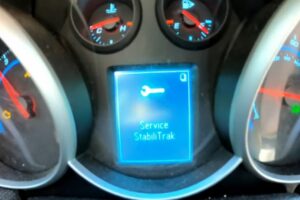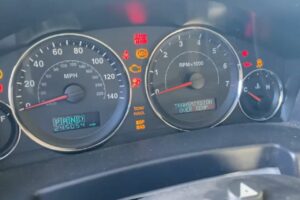So, you’ve come across a ‘Honda Code B123’ on your car’s dashboard and you’re wondering what it means.
Put simply, the Honda code B123 is a maintenance code that signifies your vehicle needs an oil and filter change, tire rotation, and inspection of the drive belt.
In this article, we’ll delve deeper into what triggers this specific code to pop-up and how best to address it without causing further harm to your beloved car. Let’s kick start our engines!
Honda Code B123 signifies comprehensive maintenance for your Civic, including oil and filter replacement, brake inspection, and fluid checks. Ensure timely service for optimal performance. For intricate tasks, trust authorized Honda service centers to maintain your vehicle’s integrity.
Table of Contents
What is Honda Code B123?

Honda Code B123 is a maintenance code that signals the need for certain services on your vehicle. Here’s what each character in the code represents:
This maintenance code system helps ensure your Honda remains in excellent condition by informing you about necessary servicing tasks.
| Character | Service |
|---|---|
| B | Engine Oil and Filter Change + Inspections |
| 1 | Tire Rotation |
| 2 | Air Cleaner Element Replacement/Check |
| 3 | Transmission Fluid Replacement |
The cost to address Honda Code B123 maintenance is around $350 to $400. Factors like location, dealership rates, and additional services may influence the total expense. Contact your local Honda dealership or trusted auto service center for an accurate estimate tailored to your specific needs.
Here you can see in the below image one of our reader got quoted for $350 from a honda dealer to fix this issue:

Remember: Timely vehicle maintenance ensures optimal performance and longevity!
Understanding the Meaning of Each Component in Honda Code B123
Honda code B123 is a maintenance code that your vehicle may display. It’s broken down into three distinct parts:
Code B123 in Honda Civic indicates the following maintenance tasks:
Additional Codes:
For a detailed understanding and proper execution, it is recommended to consult the Honda manual. Regular maintenance is crucial for optimal vehicle performance.
Here’s a quick table summary:
| Code | Service |
|---|---|
| B | Brake Inspection |
| 1 | Tire Rotation |
| 2 | Replace Engine Air Filter, Check Drive Belts |
| 3 | Transmission Fluid Replacement |
Remember, always get these services done by professionals. Proper maintenance is key to keeping your Honda running at its best!
How to Diagnose Honda Code B123?
Here’s a step-by-step guide on how to diagnose the Honda code B123:
Invest in an OBD-II Scanner:
- This tool will allow you to read and reset error codes.
Once you’ve successfully diagnosed that code B123 is present, refer to your vehicle’s service manual for further instructions specific to your model.
Common Causes of Honda Code B123:
This table shows common causes associated with this error code:
| Cause | Description |
|---|---|
| Old Engine Oil | Could be due time for an oil change |
| Dirty Filters | Air or oil filters may need replacement |
| Software Issue | May require system update |
Remember, while diagnosing can be done at home, any repairs should ideally be performed by a professional mechanic.
Common Causes of Honda Code B123:
Honda code B123 signals maintenance issues related to oil and filter change, tire rotation, and comprehensive vehicle inspection. Here are the common causes for this:
Here’s a table outlining these problems and their possible solutions:
| Problem | Solution |
|---|---|
| Dirty Engine Oil | Change engine oil |
| Oil Filter Issues | Replace oil filter |
| Tire Rotation Ignored | Perform tire rotation |
Remember:
- Regularly check your car’s health.
- Don’t ignore warning signs like strange noises or lights on your dash.
- Keep track of when you last performed maintenance tasks such as an oil change or tire rotation.
- Consult with a professional if you’re unsure about anything regarding your vehicle’s upkeep.
Understanding what triggers Honda code B123 helps maintain your car in optimal condition while preventing potential damage from ignorance or neglect!
Step-by-Step Guide to Fixing Honda Code B123:
Honda code B123 might look complex, but it’s a simple maintenance task you can handle. Here’s how.
1. Gather Your Tools:
You’ll need:
2. Drain the Old Oil:

First, use your socket wrench to open the drain plug and let all old engine oil out into an appropriate container.
3. Replace the Oil Filter:

Next up, change out that old, grimy filter for a new one.
| Steps | Details |
|---|---|
| Remove | Use your hands or a special tool if needed to unscrew the existing filter |
| Insert | Screw in your fresh filter by hand |
4. Add New Oil:

Grab that funnel and start adding new engine oil slow and steady using these steps:
Note: Avoid overfilling!
If “B” means brake service is also needed on top of 1-2-3 regular maintenance then:
5. Check Brake Fluid Levels:
It’s time to check those brakes!
And voila! Honda code B123 fixed at home – who knew? Just remember – always dispose of used fluids responsibly.
You can also watch this video to fix this issue:
Recommended Tools for Troubleshooting Honda Code B123:
When troubleshooting the Honda code B123, having the right tools can make a world of difference. Below are some essential tools you will need:
Here’s a quick reference table that outlines each tool, its use, and why it’s important:
| Tool | Use | Importance |
|---|---|---|
| OBD2 Scanner | Reads and erases error codes | Primary tool for diagnosing problems |
| Multimeter | Measures electrical values | Essential in identifying electrical faults |
| Screwdrivers | Removing/adjusting components | Handy for general car repairs |
- Start by connecting your OBD2 scanner to your vehicle’s diagnostic port. Your scanner should then display any fault codes present.
- If an electric issue seems likely, use your multimeter to check voltages around the circuitry.
- Finally, screwdrivers may be needed if adjustments or part removals become necessary during your troubleshooting process.
Remember – always refer back to these tools when dealing with Honda code B123!
Preventive Maintenance Tips to Avoid Honda Code B123:
Following these maintenance tips can help you avoid encountering the Honda Code B123:
For a more detailed preventive care routine, refer to the table below:
| Task | Frequency |
|---|---|
| Change Engine Oil | Every 3,000 miles or every 3 months |
| Check Tire Pressure | At least once a month |
| Replace Brake Pads/Rotors | Every 25,000 – 70,000 miles |
Remember that regular servicing is key when it comes to maintaining your vehicle’s health. By staying proactive with these steps above, you’ll keep Honda code B123 at bay!
Lastly,
- Use only manufacturer-recommended parts for replacements as incompatible parts could lead to serious issues.
- Never skip scheduled services as doing so might result in unnoticed problems escalating into major repairs.
Keeping up with regular checks and maintenance not only keeps away trouble codes like B123 but also ensures optimal performance and longevity of your car!
Frequently Asked Questions About Honda Code B123:
What does Honda code B123 mean?
The B123 code is a maintenance code and simply means that your vehicle requires scheduled service. Each letter in the code corresponds to a specific type of service:
‘B’ refers to oil and filter change
‘1’ points towards tire rotation
‘2’ suggests replacing engine air filter and cabin air filter
‘3’ indicates it’s time for transmission fluid replacement.
How often will I see this code?
The frequency depends on various factors such as:
Your vehicle model.
How frequently you drive.
Driving conditions.
However, typically, most drivers report seeing this around every 10,000-20,000 miles.
Can I perform these services myself?
Yes! If you’re comfortable performing basic car maintenance tasks like changing oil or rotating tires – go ahead! However remember that if things get complicated – don’t hesitate reaching out for professional help!
Is driving with the B123 code safe?
Yes, you can drive without immediate harm but should schedule an appointment soon. Ignoring this could lead to more serious issues over time.
| Code | Service |
|---|---|
| B | Oil and Filter Change |
| 1 | Tire Rotation |
| 2 | Replace Engine Air Filter and Cabin Air Filter |
| 3 | Transmission Fluid Replacement |
Troubleshooting Tips for Other Common Honda Diagnostic Codes:
When it comes to Honda cars, the B123 code is not the only diagnostic trouble code (DTC) you might encounter. Here are some common DTCs and tips to troubleshoot them.
Here’s an easy-to-follow chart summarizing these codes:
| Code | Possible Cause | Solution |
|---|---|---|
| P0300 | Faulty spark plugs / Fuel Injector Problems | Regular Check & Replace if necessary |
| B0159 | Malfunctioning Ambient Air Temp Sensor | Replace the Sensor |
| U0001 | Electrical Issues (Damaged Fuse/Broken Wire) | Thorough Wiring Inspection |
Remember, while DIY troubleshooting can fix minor issues, more complex problems may require professional assistance. It’s always best practice to consult with a certified mechanic when dealing with DTCs.
Conclusion and final thoughts
When it comes to addressing the Honda code B123, you’ve got all the necessary details now.
This maintenance code alerts you that your vehicle requires oil and filter change, tire rotation, and a thorough inspection of specific components.
Remember to take these notifications seriously for maintaining optimal performance and longevity of your car.
Don’t sweat if you aren’t mechanically inclined; professional help is always available at authorized service centers.
The key takeaway is not to ignore this maintenance alert. Timely action can prevent minor issues from turning into major problems down the road for your Honda.
Latest Posts:
- Can WD-40 Remove Scratches on Cars? (Hint: Yes, but…)
- Can You Use a Drill to Polish Your Car? (We Tried it Out!)
- Should You Cover Car Scratches With Stickers? (REVEALED!)
- Buick Service Stabilitrak: (Causes & 100% Guaranteed Fix!)
- Common Holden Trax Problems (Causes & 100% Proven Fixes!)
- Jeep Commander Transmission Over Temp: (Guaranteed Fix!)











Leave a Reply